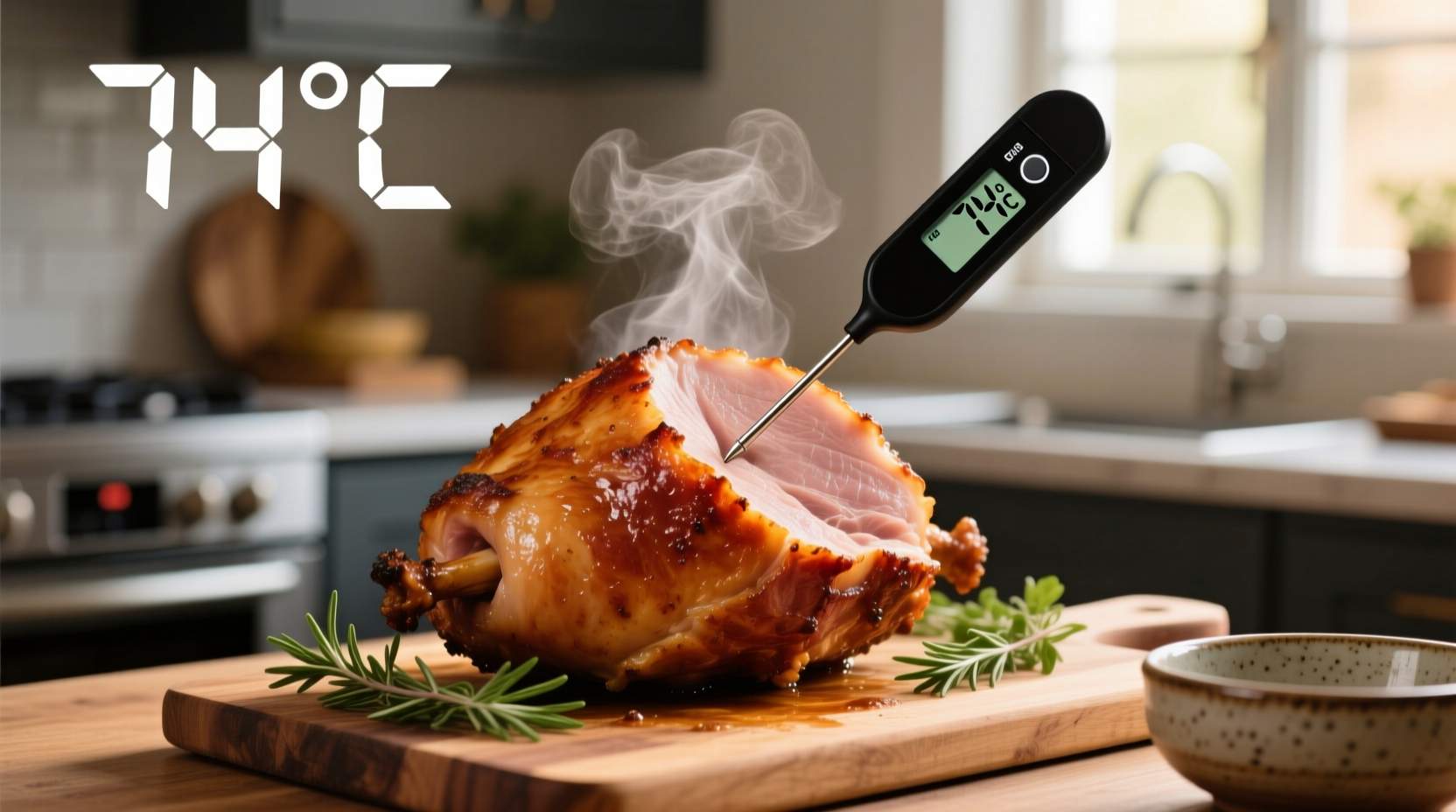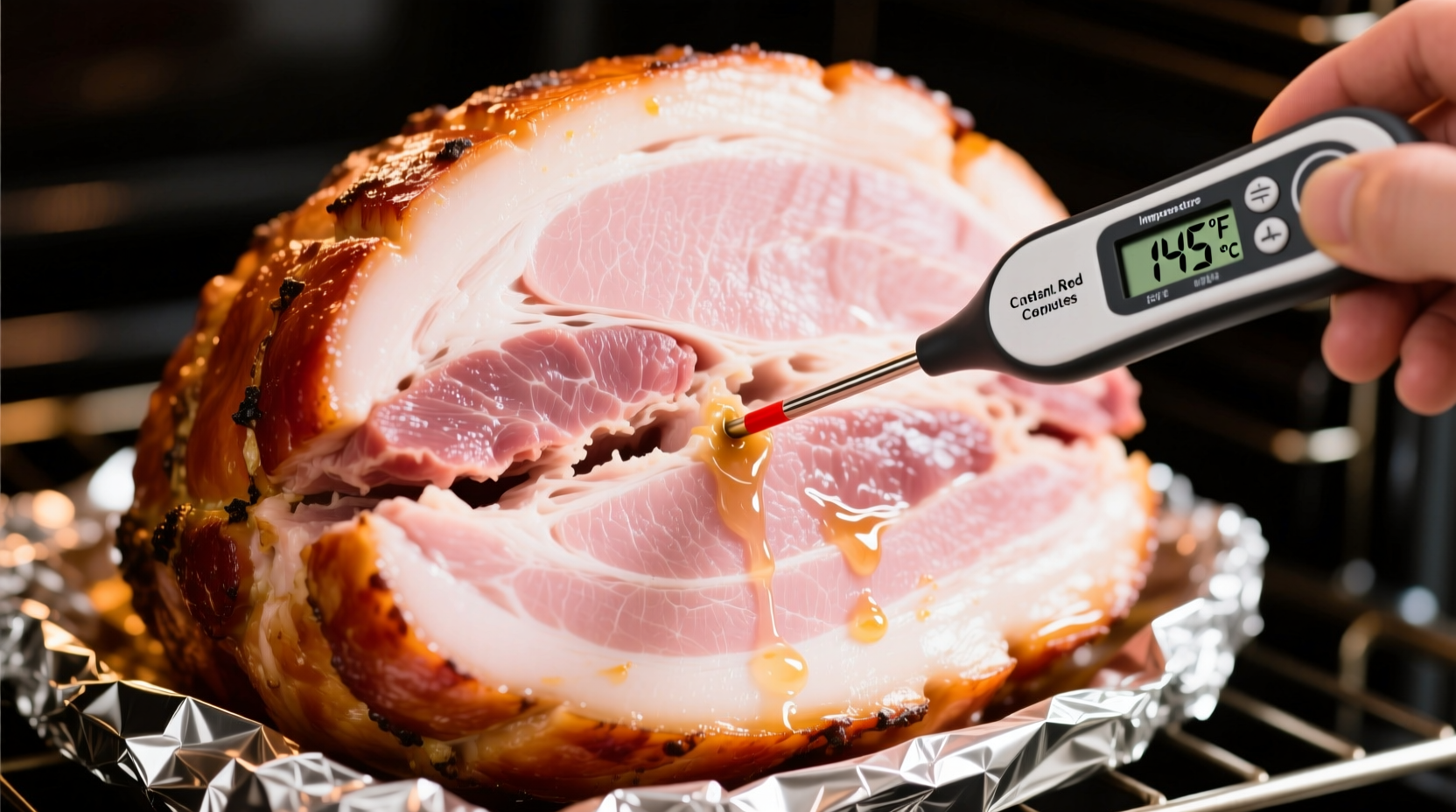The safe internal temperature for fully cooked ham is 140°F (60°C), while fresh ham must reach 145°F (63°C) with a 3-minute rest time. These USDA-recommended temperatures ensure food safety while maintaining optimal texture and flavor.
Nothing ruins a holiday meal faster than dry, overcooked ham or the risk of foodborne illness from undercooked meat. Getting the temperature right isn't just about perfection—it's about safety and satisfaction. Whether you're preparing a spiral-cut holiday centerpiece or a weeknight dinner, understanding the precise temperatures for different ham types transforms your cooking results.
Why Ham Temperature Matters More Than You Think
Ham sits in a critical food safety zone where improper temperatures can lead to Staphylococcus aureus or Salmonella contamination. Unlike other meats, ham's processing history dramatically affects its required cooking temperature. The USDA's Food Safety and Inspection Service (FSIS) maintains strict guidelines because:
- Pre-cooked hams only need reheating, not cooking
- Fresh hams require full cooking to eliminate pathogens
- Spiral-cut varieties have unique heat distribution challenges
| Ham Type | Safe Internal Temperature | Rest Time | Special Considerations |
|---|---|---|---|
| Pre-cooked (city ham) | 140°F (60°C) | None required | Reheating only; ideal for spiral-cut |
| Fresh (country ham) | 145°F (63°C) | 3 minutes | Requires full cooking process |
| Smoked ham | 140°F (60°C) | None | Check label—many are pre-cooked |
| Canned ham | 140°F (60°C) | None | Ready-to-eat when cool |
How to Measure Ham Temperature Like a Pro
Thermometer placement makes or breaks accuracy. Insert your digital probe thermometer into the thickest part of the meat, avoiding bone or fat pockets that give false readings. For spiral-cut hams, check multiple points since the cuts create uneven heating.
"Many home cooks make the mistake of checking temperature only once near the end of cooking," explains Antonio Rodriguez, culinary expert with professional kitchen experience. "For perfect results, start monitoring 15-20 minutes before expected finish time. Ham continues cooking while resting, so remove it 5 degrees below target temperature."

Step-by-Step Temperature Guide for Perfect Ham
1. Identify Your Ham Type First
This crucial step determines your target temperature. Check packaging for phrases like "cook thoroughly" (fresh ham) or "ready to eat" (pre-cooked). When in doubt, assume it's fresh and cook to 145°F.
2. Proper Thermometer Technique
Calibrate your thermometer before use. Insert probe horizontally into the meat's center, not from the top. Wait 15 seconds for an accurate reading. For best results, check multiple locations—especially with spiral-cut varieties where heat penetrates unevenly.
3. The Critical Resting Period
Remove pre-cooked ham at 135°F—it will reach 140°F while resting. Fresh ham should come out at 140°F to hit 145°F after resting. Tent loosely with foil and rest 10-15 minutes. This allows juices to redistribute, preventing dryness.
Context Matters: When Standard Guidelines Need Adjustment
Certain situations require temperature adjustments. High-altitude cooking (above 3,000 feet) needs slightly higher temperatures due to lower boiling points. When using slow cookers, maintain temperatures above 140°F throughout cooking. For smoked ham on pellet grills, account for temperature fluctuations by checking more frequently.
The FDA Food Code has evolved these standards based on improved pathogen research. While older guidelines suggested 160°F for all pork products, modern understanding of parasite elimination at lower temperatures has refined these recommendations. This evolution reflects better science, not reduced safety standards.
Avoid These 3 Temperature Mistakes
- The "Eyeball" Method—Judging doneness by appearance alone risks undercooking. Pink color can remain in properly cooked ham due to curing.
- Single-Point Testing—Checking only one spot misses cold zones, especially problematic in spiral-cut hams.
- Ignoring Rest Time—Serving immediately after cooking yields drier results and inaccurate final temperatures.
Troubleshooting Common Temperature Issues
Problem: Ham reaches target temperature but seems dry
Solution: You likely removed it from heat too late. Pull pre-cooked ham at 135°F and fresh ham at 140°F to account for carryover cooking.
Problem: Temperature stalls during cooking
Solution: This is normal during the collagen-to-gelatin conversion phase. Maintain steady oven temperature and be patient—resist increasing heat.
Problem: Uneven temperatures in spiral ham
Solution: Cover exposed spiral cuts with foil during initial cooking, then remove for final glazing phase.
Storing and Reheating Leftovers Safely
Cool cooked ham within 2 hours of cooking. Store in airtight containers for up to 3-4 days. When reheating leftovers, return to 140°F minimum. The USDA Meat and Poultry Hotline confirms that properly stored ham maintains safety at these temperatures (USDA FSIS).
Final Temperature Checklist
- Verified thermometer accuracy before cooking
- Identified correct ham type and target temperature
- Checked multiple points in the thickest sections
- Accounted for 5-degree carryover cooking during resting
- Allowed proper rest time before serving











 浙公网安备
33010002000092号
浙公网安备
33010002000092号 浙B2-20120091-4
浙B2-20120091-4